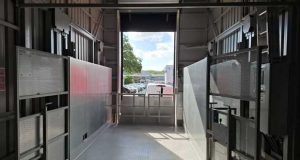Peter Burbidge, Managing Director, Pressac
For more than a year, we’ve been wondering what the office will look like when the pandemic ends.
And now we know: a hybrid model that combines in-person and remote work. But are these changes temporary or could they be here to stay?
The seismic shift for many organisations from on-site working to remote working was an enforced one, with the stay-at-home rule in operation for all those who could. But return to work is unlikely to be a simple reversal of this, with companies instead looking at long-term ways they can use their buildings more intelligently.
According to Gartner, 47% of businesses are planning to increase their investments in the Internet of Things (IoT), leading to something of a digital revolution.
Moving away from short-term, knee-jerk change, these organisations are seeking to embed digitalisation from the inside out, using smart technology to optimise everything from occupancy to energy use, improving sustainability and wellbeing and ultimately reducing costs.
While 2020 will be remembered for the pandemic, in the world of IoT it symbolises something far more positive.
The seminal year proved to be a tipping point, with IoT Analytics stating: “In 2020, for the first time, there are more IoT connections than there are non-IoT connections.”
Indeed, there has been an increase in investment to PropTech start-ups, with the recognition of how they drive smart building innovation.
Meanwhile, Memoori’s research has discovered that 665 start-ups were founded between 2011 and 2020 in the smart buildings sector, with total global investment capital since 2012 amounting to $18.8bn.
A long-term investment
Now, business leaders are recognising the crucial role that IoT investment will play over the coming years. In the short term, distancing practices and occupancy limits mean that space needs to be used optimally.
Longer term, creating healthy workplaces and improving sustainability practices will increase compliance with workplace regulations. And overall, businesses can see a reduction in operating costs.
The continuous, real-time intelligence presented by smart technology can offer businesses the highly accurate insights and data they need to drive strategy and decision making.
This digital transformation can shift the dynamics of building, changing it from an intractable inanimate object into a fluid form of intelligence, one which talks to it users about what it needs to operate optimally.
According to McKinsey 2020, IoT has the potential to generate a staggering $4trn to $11trn in economic value by 2025, while the main revenue driver for 54% of enterprise IoT projects is cost savings. Certainly food for thought for organisations yet to get on board.
Reversing fortunes
Businesses setting their priorities for 2021 would be wise to include smart technology high on their agenda. The willingness to embrace intelligent IoT and use it as a catalyst for change can open up new revenue streams, transforming a business’s fortunes.
Meanwhile, in the increasingly crowded marketplace of smart building firms, companies can differentiate themselves, either through their business model, via astute partnerships or through innovative technologies.
Smart technology is here to stay, and organisations need to embrace and embed this throughout their buildings if they are to stay relevant.
Digital transformation is set to reshape the buildings industry forever, turning our buildings into sentient spaces which we can continuously and responsively adapt with data-driven decision making.
About Pressac
As a trusted partner to some of the world’s leading companies, we’ve been designing and manufacturing smart technology for over 60 years.
With in-house design, development and quality-assurance experts, plus our own 5,000sqm high-tech UK manufacturing facility, we can manage the full lifecycle of product creation, from design and prototyping to manufacture and distribution.
We partner with our customers to help deliver scalable, cost-effective, compliant solutions that offer the very best performance, flexibility and reliability.
Find out more: www.pressac.com
-ends-
To have your industry news published in the pages of FMJ’s news section, Month in FM, and here online on fmj.co.uk, please send your news and image to Danny Grange danny.grange@kpmmedia.co.uk
The view or information contained within these unedited press releases, are that of the company producing it and not necessary the views of kpm.





